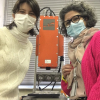
“Lots of artificial intelligence (AI) programs can make use of data-rich hyperspectral and polarimetric images, but the equipment necessary for capturing those images is currently somewhat bulky,” says Michael Kudenov, an associate professor of electrical and computer engineering at North Carolina State University. “Our work here makes smaller, more user friendly devices possible. And that would allow us to better bring those AI capabilities to bear in fields from astronomy to biomedicine.”
While there are larger devices that are capable of capturing hyperspectral and polarimetric images, smartphone-sized imaging technologies have run into significant challenges. For example, the design of cell phone camera technologies results in very slight errors in the alignment of the different wavelengths of light in the final image. And the problem is exacerbated when a camera can capture more wavelengths, as is the case with hyperspectral technologies.
The creators of the new light sensors were inspired by the eyes of mantis shrimp, which are exceptionally good at accurately capturing subtle gradations of colour. So, the researchers created an organic electronic sensor that mimics the mantis shrimp’s eye. Its called the Stomatopod Inspired Multispectral and POLarisation sensitive (SIMPOL) sensor. The researchers developed a prototype SIMPOL sensor that can simultaneously register four spectral channels and three polarisation channels. While only a proof of concept, the researchers used modelling simulations to determine that the design could be used to create detectors capable of sensing up to 15 spatially registered spectral channels.
“SIMPOL’s colour channels can discern spectral features 10 times narrower than typical imaging sensors; in other words, it is 10 times more precise”, Kudenov says.
“Our work demonstrates that it is possible to create small, efficient sensors that can simultaneously capture hyperspectral and polarimetric images”, says Brendan O’Connor, co-corresponding author of the paper and an associate professor of mechanical and aerospace engineering at NC State. “I think this opens the door to a new breed of organic electronic sensing technologies.”










